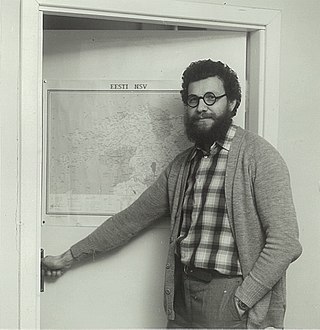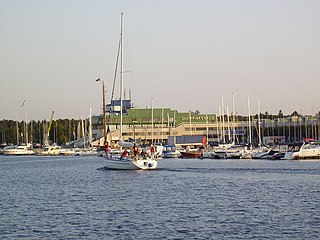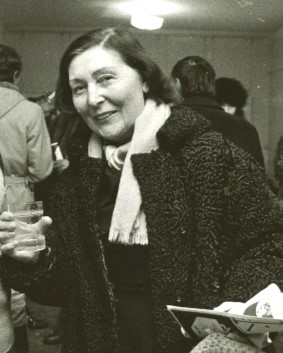
Linnahall is a multi-purpose venue in Tallinn, Estonia. It is situated in the harbor, just beyond the walls of the Old Town, and was completed in 1980. The venue also features a heliport and a small seaport.
Raine Karp is an Estonian architect.
Andres Alver is an Estonian architect.
Hanno Grossschmidt is an Estonian architect.
Tomomi Hayashi is a Japanese-Estonian architect.
Tarmo Laht is an Estonian architect.
Ra Luhse is an Estonian architect.
Andres Põime is an Estonian architect.
Tiit Trummal is a notable Estonian architect.
Tanel Tuhal is a notable Estonian architect.
Mart Port was an Estonian architect and pedagogue. He was the head of many statutory plans during the Soviet era, including Tallinn, Tartu, Pärnu, Viljandi and Tallinn's districts Mustamäe, Väike-Õismäe and Lasnamäe.
Anton Lembit Soans was an Estonian architect, urban planner and lecturer. He was one of the founding members of the Estonian Architects Union.

Tiit Kaljundi was an Estonian architect and a member of the Tallinn School. He became well known in the later part of the 1970s as a part of a new movement of Estonian architects that was led by Leonhard Lapin and Vilen Künnapu. The majority of the architects in this movement were graduates from the State Art Institute in the early 1970s. This group included Kaljundi, Avo-Himm Looveer, Ain Padrik, Jüri Okas, and Ignar Fjuk, as well as Veljo Kaasik and Toomas Rein from an older generation of architects. After the 1983 exhibition in the Tallinn Art Salon, they became known as the “Tallinn Ten" or the "Tallinn School," a broader term to describe the group used by the Finnish architect Markku Komonen.
Tõnu Mellik was an award-winning Estonian architect active in the mid-twentieth century.
Väino Tamm was an Estonian interior designer, vice associate professor in ERKI in from 1959 and interior design department manager in 1968–1986, from 1970 he was the associate professor of the interior design department in ERKI. He was one of the firsts to pave the way to the interior design department as we know it today. Väino Tamm changed the spatial design profession into a subject that deals with problems involving interior design and instead of decorating the space on the contrary dealing with arranging it. Also dealing with an overall effect and the room's whole impact on a person.
Vello (Ergav-Vello) Asi was an Estonian interior architect, graphic designer and professor at the Estonian Academy of Arts. Together with Väino Tamm, he has been one of the most important interior architects and representer of modernist interiors in Estonia since the late 1950s.

Tallinn Olympic Yachting Centre is a sport complex in Pirita, Tallinn, Estonia.
Peeter Tarvas was an Estonian architect and professor.
Avo-Himm Looveer was an Estonian architect.

Helmi Üprus was an Estonian architectural and art historian. She trained in romance languages, studied English and ethnography, and earned a master's degree in art history from the University of Tartu in 1936. She worked her way up to head the cultural history department of the Estonian National Museum, where she researched folk art. In 1947, she began working at the Institute of History of the Academy of Sciences of the Estonian SSR. Persecuted by Stalinism she lost her job in 1950 and worked in a factory until Stalin's death. From 1953, she was the chief specialist in architecture and history for the government monument restoration service.




